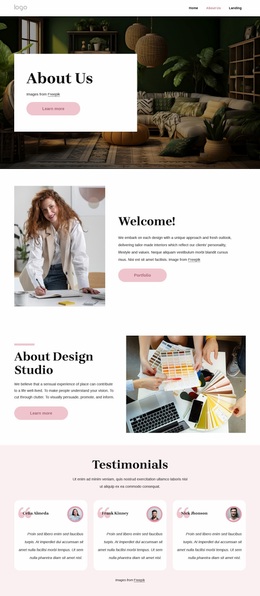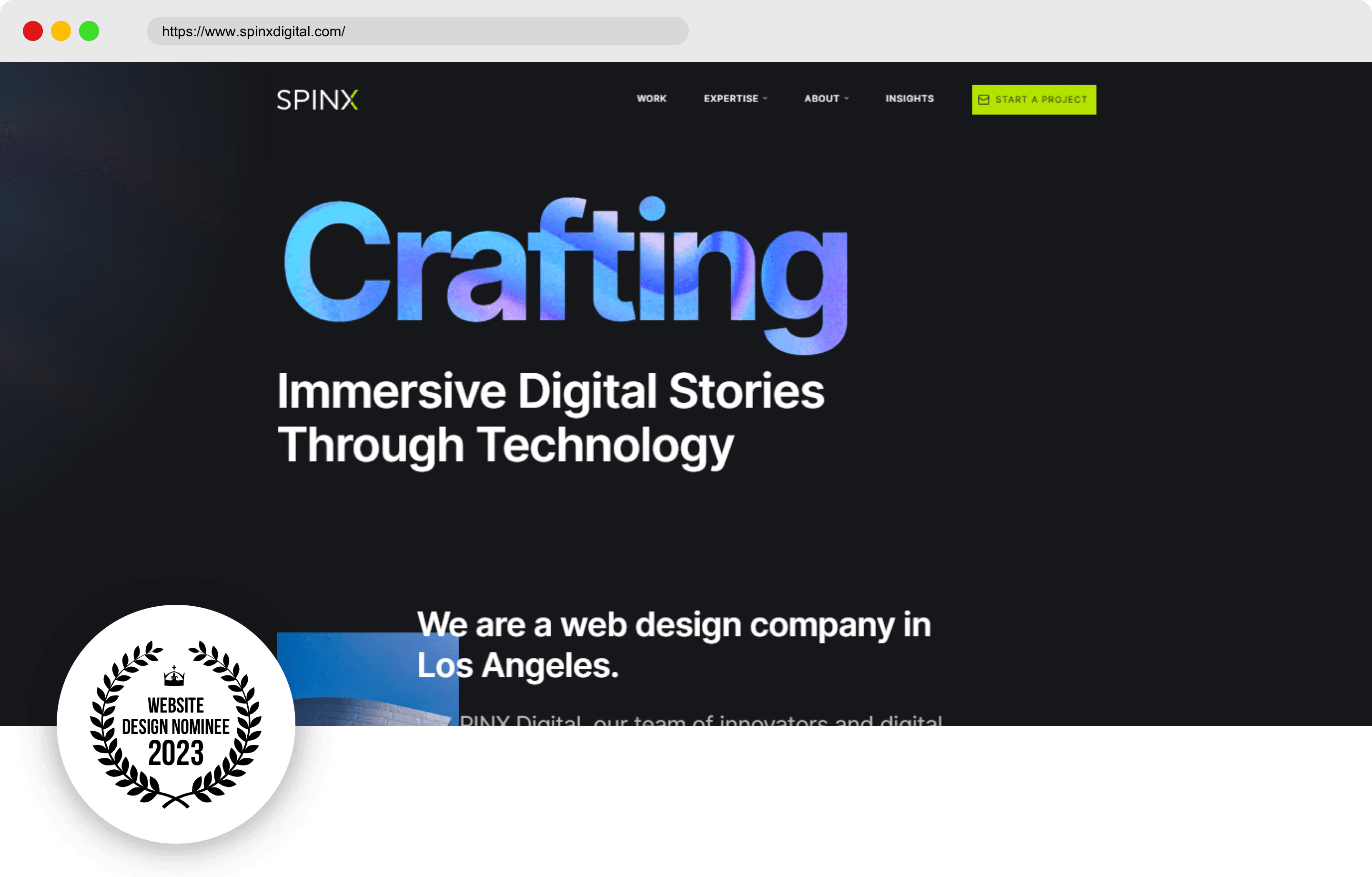The Ultimate Overview to Modern Site Layout Trends
In the ever-evolving electronic landscape, modern site design trends play a critical function fit customer experience and engagement. From the surge of minimalist layout principles that prioritize simpleness to the effect of bold typography in defining brand name identification, each element contributes to a natural on the internet presence. The focus on responsive and mobile-first approaches, along with innovative microinteractions, additionally improves use. The growing focus on lasting web design techniques mirrors a dedication to ecological obligation. These fads jointly elevate crucial questions regarding the future of efficient website design and what it means for companies and customers alike.
Minimalist Layout Concepts
Minimalist design concepts highlight the idea that less is much more, promoting for simpleness and performance in visual communication. This method remove unnecessary components, focusing rather on important components that share the designated message properly. By prioritizing quality, minimalist design boosts user experience, enabling site visitors to browse web sites easily.
Core tenets of minimalist style consist of using adequate white space, which develops a feeling of equilibrium and organization. This unfavorable room not only guides the viewer's focus to essential elements yet additionally fosters a calming aesthetic atmosphere. Additionally, a limited color palette is frequently used, using monochromatic schemes or soft shades to maintain aesthetic communication and stop frustrating the individual.
Typography plays an important duty in minimal design, where clear font styles are picked for their simplicity and performance in connecting web content. Eventually, minimalist style concepts cultivate a focused atmosphere that urges users to engage with the web content, improving the overall performance of contemporary site layout.
Strong Typography Choices
Embracing vibrant typography choices has become a defining attribute of modern-day web site design, as it successfully records interest and communicates strong messaging. Developers are increasingly utilizing typography not simply as a practical element yet as a vital visual part that boosts the total aesthetic and individual experience.

Furthermore, the association of bold typography with minimal layout principles enables for striking contrasts, improving readability while keeping visual allure. The use of whitespace around strong text better highlights its value, making sure that the message resonates with the target market.
As electronic landscapes come to be much more competitive, leveraging strong typography makes it possible for brands to differentiate themselves and leave a long-term perception. The careful selection of font styles and their application can evoke emotions, develop tone, and drive activity, making vibrant typography an important device in contemporary web site design. Ultimately, it is an effective means to improve storytelling and guarantee that key messages are not just seen but additionally really felt.
Receptive and Mobile-first Layout
Mobile-first and responsive design has actually become a critical concept in contemporary site development, mirroring the boosting reliance on mobile gadgets for accessing on the internet web content. As customer habits shifts towards mobile surfing, designers must prioritize producing experiences that adjust perfectly throughout various display dimensions and resolutions.
A receptive design makes certain that a web site instantly readjusts its design, photos, and functionality based on the tool being made use of. Mobile-first design advocates for developing web sites originally for smaller screens, consequently scaling up to larger displays.
Carrying out mobile-first and receptive concepts not just satisfies user preferences however likewise aligns with search engine optimization (SEARCH ENGINE OPTIMIZATION) techniques. Significant search engines, like Google, prioritize mobile-friendly websites in their rankings, making it imperative for services to adopt these layout methods. In a competitive electronic landscape, welcoming mobile-first and receptive layout is not just an option; it is vital for ensuring availability and engagement with a varied audience.
Involving Microinteractions
Microinteractions play a pivotal duty in enhancing customer involvement and overall internet site experience, especially in the context of receptive and mobile-first style. These subtle site web style components offer instant feedback to customers, making communications much more pleasurable and instinctive. Examples include switch animations, alert informs, and loading indicators, which not only guide individuals yet also produce a feeling of connection with the user interface.
Integrating engaging microinteractions can significantly enhance usability by minimizing cognitive tons. When users get auditory or aesthetic feedback upon carrying out actions, such as clicking a switch or submitting a kind, they really feel much more positive in their choices. This promotes a smoother navigating experience, eventually increasing customer retention.

As website design patterns remain to evolve, the relevance of microinteractions can not be overstated. They function as the subtle yet powerful touchpoints that transform average interactions right into extraordinary experiences, therefore boosting the overall efficiency of modern-day website design.
Lasting Internet Style Practices
Sustainable web layout practices are becoming progressively essential as the electronic landscape expands and environmental problems increase. Programmers and developers are acknowledging their responsibility to create web sites that not only serve customer demands however also reduce environmental effect. This approach encompasses several key methods.
First of all, maximizing power intake is vital. Internet sites should be designed to pack swiftly and efficiently, which minimizes web server power usage and improves customer experience. Methods such as photo compression, decreasing HTTP demands, and utilizing contemporary coding methods contribute considerably to this objective.
Secondly, choosing eco-friendly hosting carriers is important - website design. Several organizing companies are now powered by renewable resource resources, allowing internet sites to run in a more sustainable fashion. This choice reflects a dedication to minimizing carbon impacts
Furthermore, adopting a minimal style can improve sustainability. Less elements on a page result in much less information transfer, which not only speeds up loading times but additionally conserves resources.
Lastly, promoting electronic availability makes certain that internet sites reach a broader audience without unneeded bloat, lining up individual experience with ecological responsibility. By integrating these lasting methods, web designers can contribute favorably to both customer interaction and the earth's health.
Conclusion
In summary, contemporary site design trends highlight the combination of minimalist principles, bold typography, and receptive design to improve user experience. Taking on these trends is vital for producing impactful electronic experiences home that reverberate with users in a progressively affordable online landscape.
In the ever-evolving electronic landscape, modern site style trends play a vital function in shaping customer experience and engagement. By focusing on quality, minimal layout improves user experience, permitting site visitors to navigate sites easily.
Ultimately, minimal style concepts grow a focused atmosphere that encourages individuals to engage with the content, weblink enhancing the general effectiveness of modern-day internet site design.Microinteractions play a crucial function in enhancing customer involvement and total internet site experience, specifically in the context of receptive and mobile-first design.In recap, contemporary web site layout patterns emphasize the assimilation of minimalist principles, vibrant typography, and responsive design to improve user experience.